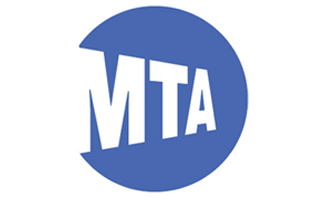 The Metropolitan Transportation Authority (MTA) today released its Proposed 2015 Budget and Four-Year Financial Plan, which includes budget projections through 2018. The plan assumes an average $260 million annual increase to labor costs as a result of recent labor settlements, but the plan proposes to pay for those costs without increasing the previously announced 2015 and 2017 fare and toll increase proposals, which in February were reduced by nearly half to the rate of inflation. The plan reallocates resources to pay for the increased labor costs as well as for a series of investments in new service, improved service quality and enhanced safety for customers and employees. The plan also contains sufficient pay-as-you-go capital funding to provide $5.4 billion in funding capacity for the 2015-2019 Capital Program. It benefits from $635 million worth of favorable underlying budget trends, including lower re-estimates of costs for fuel and electricity, debt service and pensions and higher than anticipated savings from Access-A-Ride operations, and higher-than-anticipated fare and toll revenue.
The Metropolitan Transportation Authority (MTA) today released its Proposed 2015 Budget and Four-Year Financial Plan, which includes budget projections through 2018. The plan assumes an average $260 million annual increase to labor costs as a result of recent labor settlements, but the plan proposes to pay for those costs without increasing the previously announced 2015 and 2017 fare and toll increase proposals, which in February were reduced by nearly half to the rate of inflation. The plan reallocates resources to pay for the increased labor costs as well as for a series of investments in new service, improved service quality and enhanced safety for customers and employees. The plan also contains sufficient pay-as-you-go capital funding to provide $5.4 billion in funding capacity for the 2015-2019 Capital Program. It benefits from $635 million worth of favorable underlying budget trends, including lower re-estimates of costs for fuel and electricity, debt service and pensions and higher than anticipated savings from Access-A-Ride operations, and higher-than-anticipated fare and toll revenue.
The MTA plans to invest $20 million per year in new subway, bus and commuter railroad service, as well as an additional $125 million over the four-year plan period for new operational and maintenance needs. These initiatives are detailed in separate news releases from MTA New York City Transit, the MTA Long Island Rail Road and MTA Metro-North Railroad. The budget also makes major investments in customer, employee and public safety which total $363 million over the four-year plan period. These investments are also detailed in a separate news release from the MTA.
The plan makes several long-term trade-offs to ensure revenues meet ongoing obligations. Over the four-year period, supplemental contributions to an LIRR pension plan totaling $110 million will be eliminated, though all actuarially-required contributions will continue. Also, $254 million will be withdrawn, and additional contributions totaling $533 million will be suspended for four years, from a discretionary fund for future retiree health benefits which has no mandatory funding level. The plan also reduces pay-as-you funding for the MTA Capital Program by $80 million per year, which is equivalent to a $1.5 billion reduction in Capital Program funding capacity.
The favorable budget trends and the management actions noted above allow the MTA to project a year-end cash balance of $162 million in 2014, which would be rolled forward to help balance the 2015 budget. A previous $255 million deficit projected for 2017 has been eliminated, and the 2018 projected deficit is reduced to $262 million. Fare and toll increase assumptions remain unchanged at 4% revenue increases in 2015 and 2017, which is broadly equivalent to the rate of inflation.
The MTA’s annually recurring savings, from a series of management actions that began in 2010, continue to play an important role in the MTA budget’s stability. The MTA expects to save $1.3 billion in 2015, a figure that rises to more than $1.5 billion in 2017. The savings expectations have increased with each consecutive annual budget since they were first introduced.






